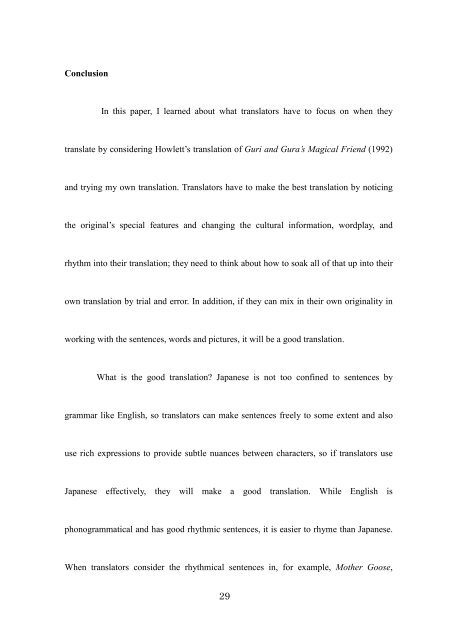Guri and Gura's Three Stories
Guri and Gura's Three Stories
Guri and Gura's Three Stories
Create successful ePaper yourself
Turn your PDF publications into a flip-book with our unique Google optimized e-Paper software.
Conclusion<br />
In this paper, I learned about what translators have to focus on when they<br />
translate by considering Howlett’s translation of <strong>Guri</strong> <strong>and</strong> Gura’s Magical Friend (1992)<br />
<strong>and</strong> trying my own translation. Translators have to make the best translation by noticing<br />
the original’s special features <strong>and</strong> changing the cultural information, wordplay, <strong>and</strong><br />
rhythm into their translation; they need to think about how to soak all of that up into their<br />
own translation by trial <strong>and</strong> error. In addition, if they can mix in their own originality in<br />
working with the sentences, words <strong>and</strong> pictures, it will be a good translation.<br />
What is the good translation? Japanese is not too confined to sentences by<br />
grammar like English, so translators can make sentences freely to some extent <strong>and</strong> also<br />
use rich expressions to provide subtle nuances between characters, so if translators use<br />
Japanese effectively, they will make a good translation. While English is<br />
phonogrammatical <strong>and</strong> has good rhythmic sentences, it is easier to rhyme than Japanese.<br />
When translators consider the rhythmical sentences in, for example, Mother Goose,<br />
29


